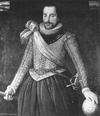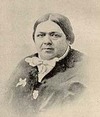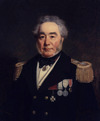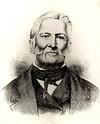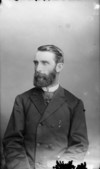.
Mortimer’s business acumen established his mercantile pre-eminence amongst the large numbers of Scottish immigrants throughout eastern Nova Scotia and Prince Edward Island. The system by which he exchanged
, Glamorganshire, and Margaret, daughter of Edward Lewis of Van, Caerphilly, Glamorganshire; d. April 1634, probably at Worleton.
Thomas Button married Mary
MACDONALD, RONALD, educator and newspaper editor; b. February 1797 in Priest Pond (Prince Edward Island), son of John Macdonald
all the Ontario campaigns to sway voters in favour. She also campaigned in New Brunswick and Prince Edward Island. Results in her home province were initially disappointing, then mildly encouraging, and
1861 and again in 1867–68 he served as president; during the years 1864–67 he was chairman of the Prince Edward Island District. His last official position before his retirement in 1870 was as chairman
Edward Parry*’s third northwest passage expedition, which sailed by way of Lancaster Sound and wintered in Prince Regent Inlet. In August
much to the dismay of his family and friends he often talked of becoming a sailor. Family pressure kept him from accepting a commission in the 7th Foot, stationed at Quebec from 1791 to 1793. Prince
Edward Island). François Bigot*, the financial commissary at Louisbourg, reported that to encourage them he had “treated them very well and
, Osborn led a sledge party south-westward to the western extreme of Prince of Wales Island. This 500-mile journey revealed no undiscovered coasts and other parties covered much greater distances. By far the
Eastern British America, including Nova Scotia, New Brunswick, Prince Edward Island, Newfoundland, and Bermuda . . . ([Sackville], n.d.). T. W. Smith, Hist. of
(Prince Edward) Island. He took his duties on the Island seriously and apparently carried them out well, but he was required to return to Nova Scotia in 1769 when the Island became a separate colony
a Charlottetown firm, and upon admission to the bar in 1873 he formed a partnership with Edward Jarvis Hodgson, with whom he would practise for some time before joining the firm of McLeod, Morson, and
of hms Malabar which had foundered off Prince Edward Island in 1838. He afterward complained bitterly about the settlement he received from the naval authorities
.
When Île Royale and its dependencies were reoccupied by France in 1749 following the treaty of Aix-la-Chapelle, Bourdon was immediately seconded to Île Saint-Jean (Prince Edward Island) as an interpreter
Cornwallis, N.S.
Little is known of John Burbidge prior to his arrival in North America. He was at Louisbourg, Cape Breton Island, in 1747, where he was
Manitoba under his father-in-law, Edward Armstrong. He held the position until July 1880 when he became the province’s chief of police. Later he also served as an inspector of licences and as chairman
Edward Island). On 6 Aug. 1744, along with two cousins (Duchambon’s sons), another ensign, and 18 soldiers, he took part in his brother François’s expedition against Annapolis Royal. During the
of that year.
Instead of proceeding directly to Cumberland as he had expected, Eagleson was sent first to St John’s (Prince Edward) Island and
to obtain, facing Île Saint-Jean (Prince Edward Island), a grant of land called Picquetou (Pictou), as well as a small river called Artigonyche (Antigonish, N.S.). The following year he asked the
.
Linked by a ferry, the railway not only functioned as the major connection to Prince Edward Island but also brought considerable economic benefit to southeastern Westmorland County. These gains, coupled



